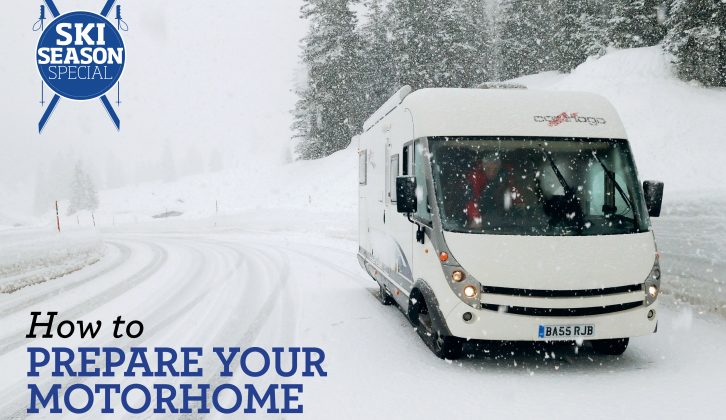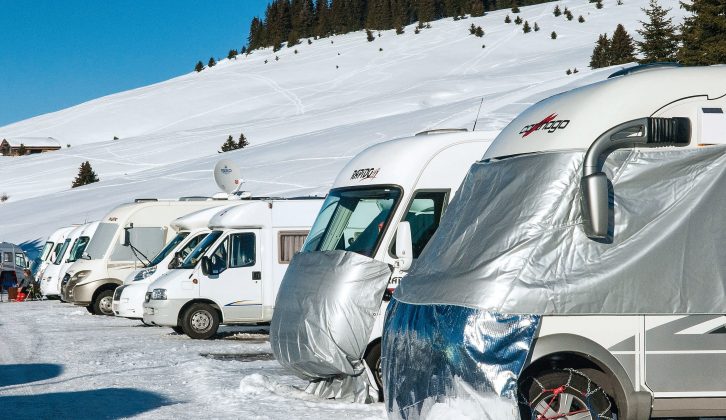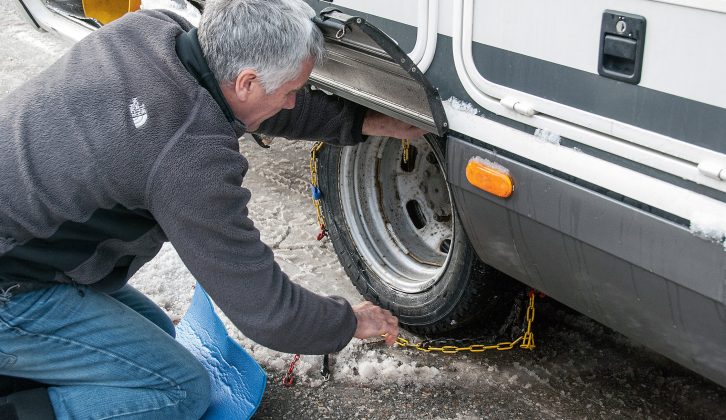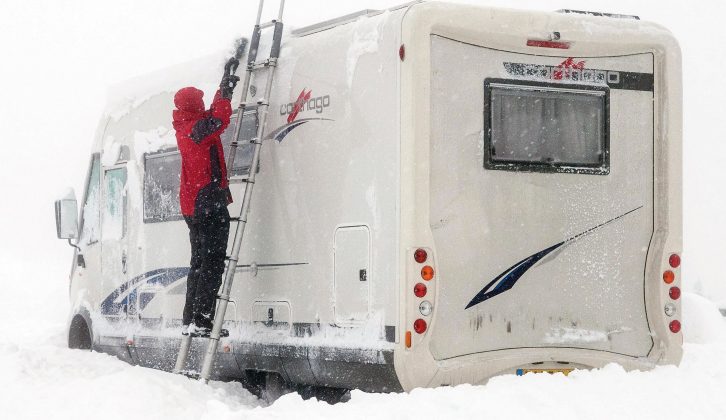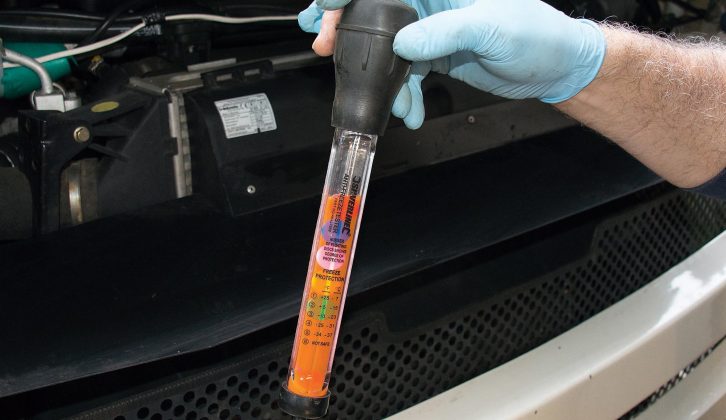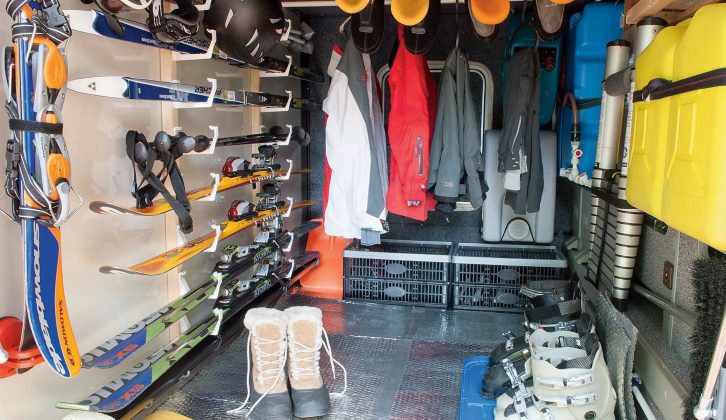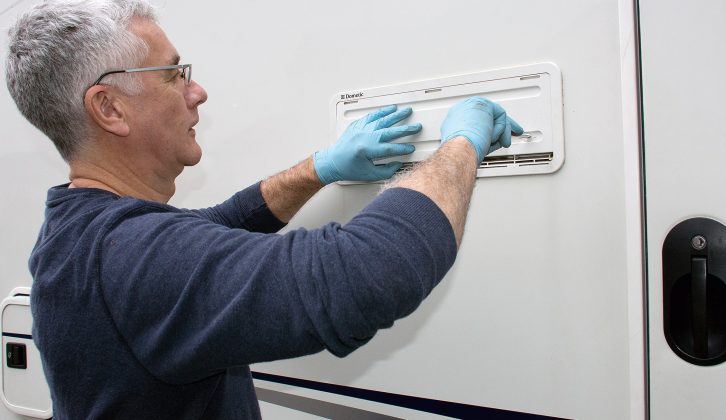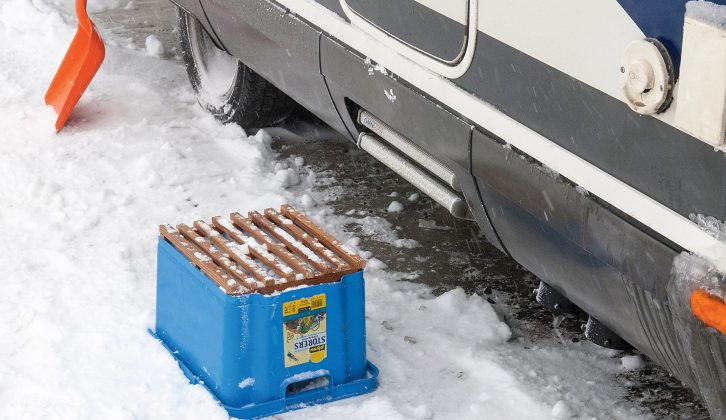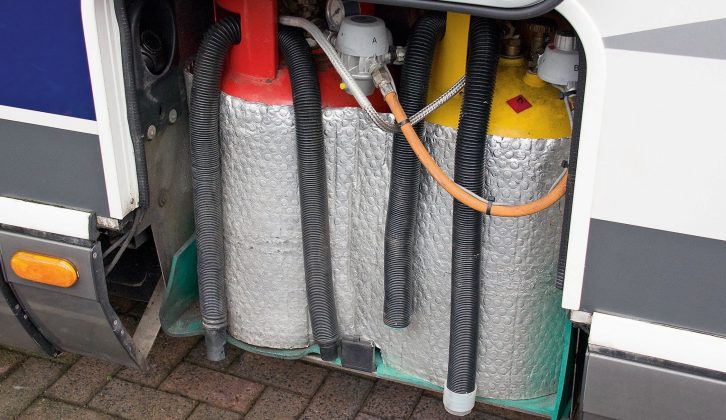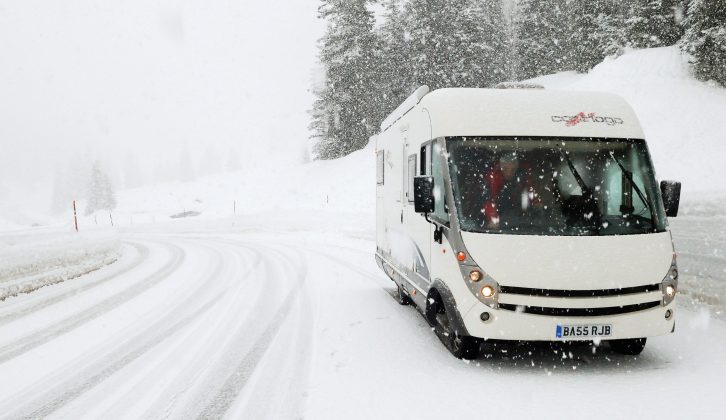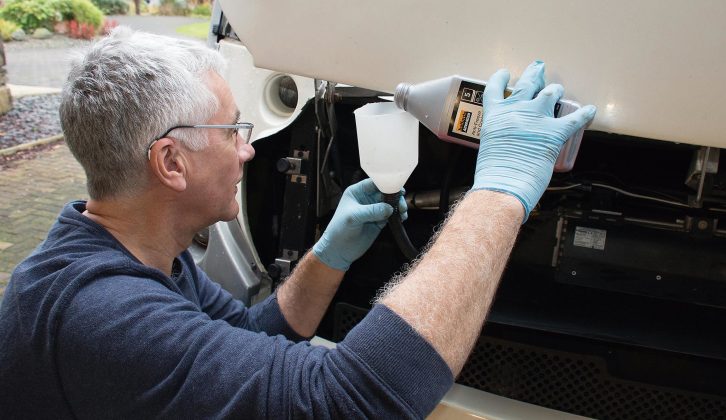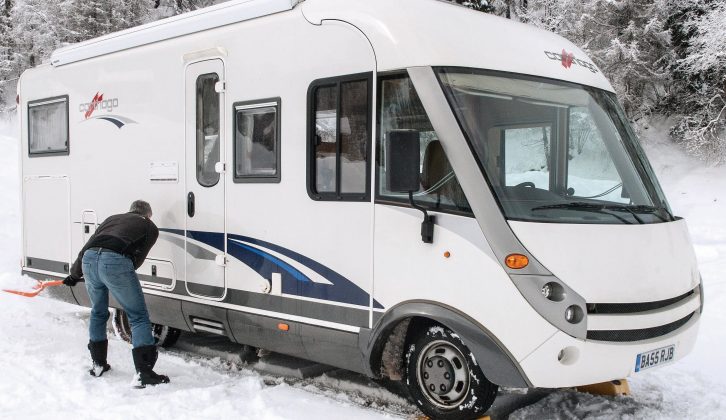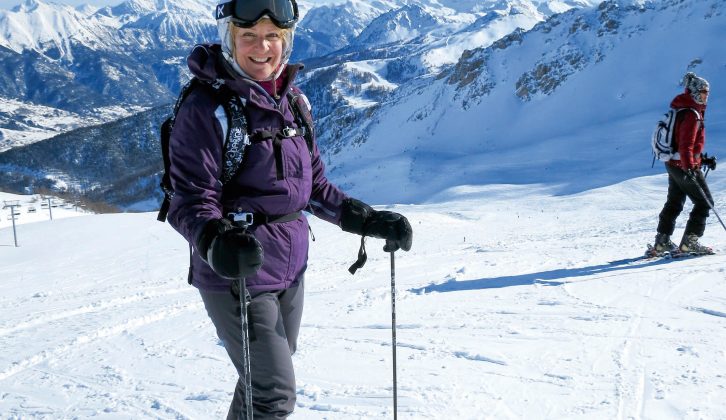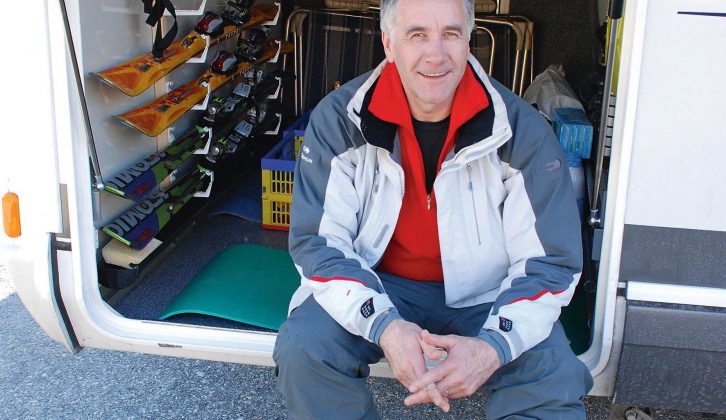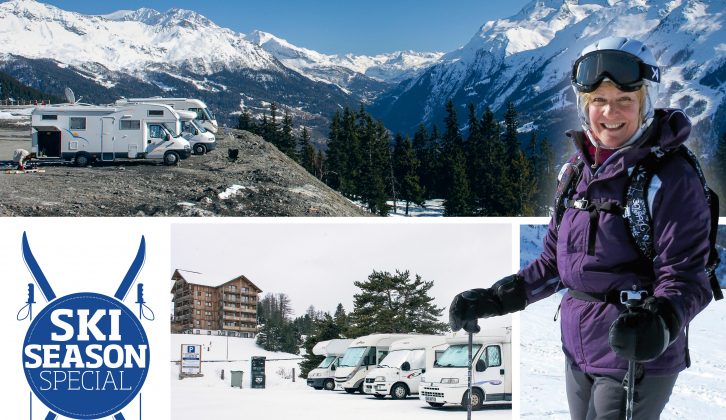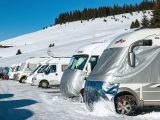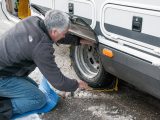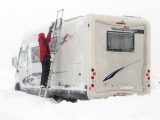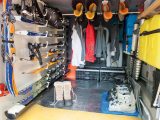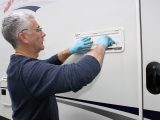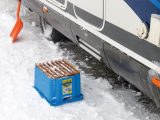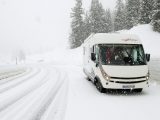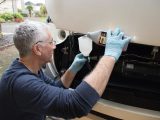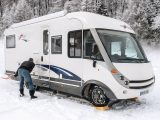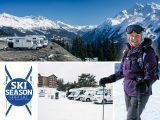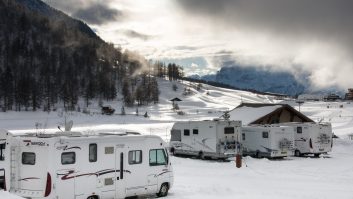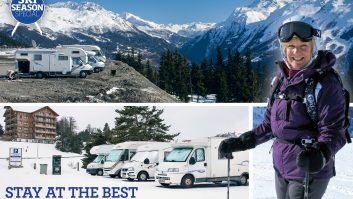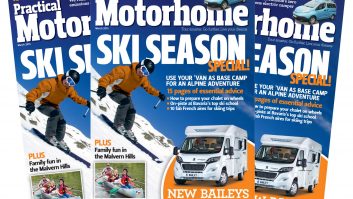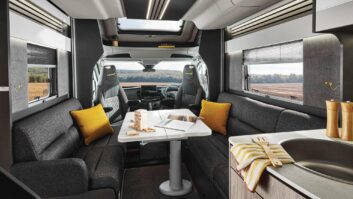Your motorhome is a precious investment, so using it all year round makes economic sense, and with preparation there is no reason why your mobile ‘place-in-the-sun’ can’t serve as a ‘chalet-on-wheels’ for your ski holidays.
Geoff and I exchanged our campervan for a Cathargo A-class coachbuilt motorhome after spotting a ski resort car park full of motorhomes. We realised that we could enjoy family holidays in the motorhome all year round. Now, with just the two of us touring, we have learned that careful preparation and packing ensure a cosy and trouble-free time.
There are three main challenges to surviving in sub-zero temperatures: staying warm and not freezing up, maintaining sufficient power, and dealing with icy conditions. Of course, if you stick to campsites you will not require all the self-sufficiency items mentioned, and if your motorhome is well-winterised you won’t need all the modifications. But we prefer to stay on one of the mountain aires in France, because they’re higher up the mountains and closer to the ski resorts.
Buy an A-class motorhome if you can
It’s important to establish how well ‘winterised’ your motorhome is to understand the challenges. The ideal ’van for snowy climates is an A-class because it has fewer cold spots in the cab area.
It will have high levels of insulation, be fitted with central heating to all areas including external lockers, and will boast a double floor housing the water tanks and the dump valves. But if that’s not your ’van’s spec, there are steps you can take to improve its performance when temperatures drop, so start with a full inspection to identify potential cold spots.
How to stop any motorhome water tanks freezing
Whatever type of motorhome you own, if it has external water tanks, they will freeze during your ski holidays. You could avoid using them by staying on campsites and using their washing facilities and you could also keep containers of water in the ’van for cooking; draining waste water into a bucket. You could also modify your tanks, adding insulation and/or a heating element or a ‘Tankblanket’. However, bear in mind that heating elements draw power, so might not be suitable when you are away from the electric hook-up at your campsite or aire.
Many motorhomes are designed with a protective, frost-discharge valve that releases if the internal temperature drops, draining the water tanks before they freeze up. To prevent your tanks emptying themselves at low temperatures, turn off your water pump or keep the heating on all the time. We just lower the thermostat at night or when we’re out. Consider insulating the water pipes and the dump valves if they are exposed. We’ve kept our waste tank from freezing, only to find the waste valves had frozen solid. The solution involved a long drive to the valley and a hairdryer.
Buy propane gas for cold climates
Even with plentiful gas supplies, if you run out of power your heating will not work. It is essential to keep your leisure batteries topped up at all times and to use propane gas rather than butane because the latter will not work in cold temperatures. Away from the electric hook-up it is advisable to fit additional batteries and, ideally, solar panels.
We carry a generator and run it when others do the same. Running the engine to charge your leisure battery is considered impolite and advertises a lack of preparation. However, you can increase the efficiency of charging when driving by having a battery-to-battery charger fitted.
As to power usage it’s worth taking a critical look at what drains your power. Darkness falls early in winter but you can reduce your power consumption by changing to LED light bulbs. Geoff and I have also modified our lighting to enable individual switching.
Where to insulate your motorhome
You can make your experience more comfortable and reduce gas consumption by making some temporary modifications to your ’van.
Before our first skiing adventure in our coachbuilt, Geoff examined every nook of the ’van’s construction, identifying potential freeze-ups and considering the practicalities of storing gear and drying ski clothes. Concentrate on obvious cold spots, such as the cab, wheel arches and behind lockers, and consider your water system and storage.
Top six insulation tips for motorhomes
- Track water pipes and lag with foam-pipe cladding
- Isolate the cab or insulate every cold spot well
- Your best buy for motorhome insulation is a roll of double-layer bubble foil builder’s insulation
- Clad external tanks with bubble foil, expandable spray foam or an adapted cool box
- Fit proprietary winter covers to fridge vents
- Always maintain ventilation for safety (and use a carbon monoxide alarm in the ‘van just in case)
Having somewhere to dry clothes is essential. We rig up a clothes drying rail in our heated garage. A wire basket and hooks in the boiler cupboard are useful for airing gloves and hats, too.
Extend your blown-air heating to warm the cab
Finally, you could consider extending your blown-air heating system to target cold areas; in some ’vans the blown air does not reach the cab. In our first coachbuilt motorhome, Geoff’s pièce de résistance involved extending the blown-air heating, by means of Y-pieces, around a Luton bed and then into ski boots to dry them. Genius!
Top 13 driving essentials for ski holidays
- Engine antifreeze at a concentration of 33-50%
- Undiluted winter screenwash
- Windscreen ice scrapers
- De-icer spray
- Squeegee and absorbent cloths
- Garden fleece to cover engine when parked
- Jump leads
- Tow rope
- Emergency kit (warning triangle, high-visibility vests and country-specific legally required items for drivers)
- Buy winter diesel that is sold in the mountains
- Winter tyres – check whether they are a legal requirement in countries you’re visiting
- Snow chains must be carried by law in most mountain regions
- Mat or knee protectors plus thin gloves for applying snow chains
Best camping equipment for ski holidays
- Head torch
- Long-handled brush
- Snow shovel
- Dustpan and small, stiff brush
- Ladder for clearing snow off the roof
- Portable generator
- WD40 for locks
- Thermal screen covers
- Thermal bonnet cover
- Spare toilet cassette
- Spare water containers and funnel
- Collapsible bucket
- Plastic sledge so you can pull containers and cassettes
- A crate to act as a doorway boot scraper
- Extension pipe to fit roof chimney flues
- Insulated pads for rooflights, single-glazed windows and doors
- Light fleecy blankets to supplement bedding
- Warm pyjamas or onesies
- Slipper boots
- Guide to camping aires in France
We carry a generator and run it when others do the same
